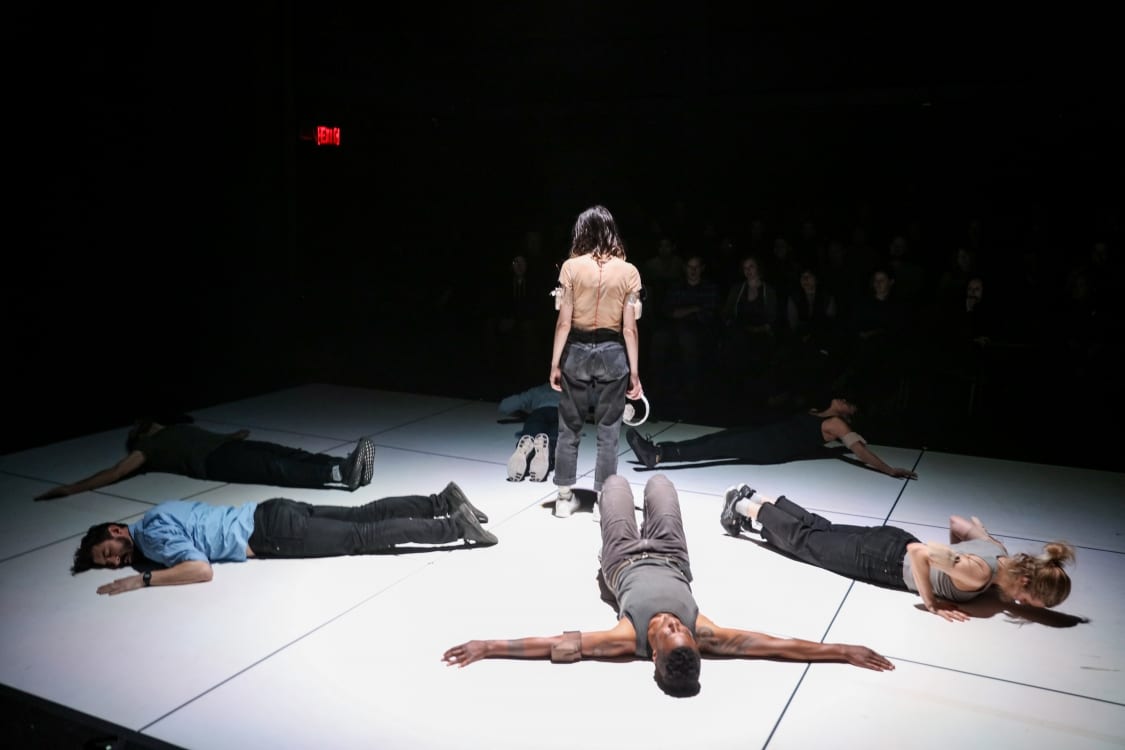It’s a rare piece of theater that manages to send the audience through the same singularly gobsmacking experience, and then make them wonder if they truly all experienced the same thing. Making use of precise technical elements, Andrew Schneider’s NERVOUS/SYSTEM manages to do just this. A series of short and long vignettes, scenes, and choreographic sequences examine the very nature of consciousness, especially as we experience it in the age of the smartphone. It is at once a revealing exercise and the most fun modern psychology lesson, a magic show that scrutinizes its own tricks.

An ensemble of incredibly skilled performers live out the human part of this experience, most notably in a mind-bending, wig-flipping opening sequence that toggles between bright light and pitch dark, as haunting and hypnotizing as a ticking clock. The performers shape-shift, or become statues, or express humanity, all with wow-factor execution. It is striking in its unpredictability, and teaches the audience how to watch the rest of the piece; stay in the moment, and delight yourself in what is revealed to you.
The key motif sequence is a meticulous feast: a fiercely present T.L. Thompson leads as a pollster on a busy street, canvassing for a cause the passers-by mostly don’t have time to care about. Over the course of the piece, we are presented with the same sequence an imperceptible variation or a stage swap (the audience is on two sides), and our familial gaze is called into question. We start to form special connections with characters that we see do only one thing (pick up a pen, express frustration, sit powerless in a wheelchair, help a stranger), but like the relationships between the other characters, they are either fleeting or formal. The simultaneous immersion in technology and lack of lasting relationships throughout the piece is a most affecting reflection of the dysfunction of modern living.

The rooted themes of this piece allow it to wander from a therapist’s office to a homebody’s TV chair seamlessly, introduce us to a carrot farmer and a couple with a missed connection, and explore consciousness and imagination, all commenting equally about how we go about the everyday. But the audience never suffers in confusion as to what is going on; instead, it revels in the uncertainty. The exploration at the heart of this piece places Schneider, the performers, and the audience all in the same boat, and so it is never pretentious. We can almost feel Schneider struggle with the same questions that plague us as we watch what he has created.
The immensely engaging and at times delightful nature of the piece, with its exacting cinematic approach and bracing execution, manages to say so much, and move us so deeply, right down to its final moments of peace. The audience leaves with less understanding, but infinitely more clarity.

